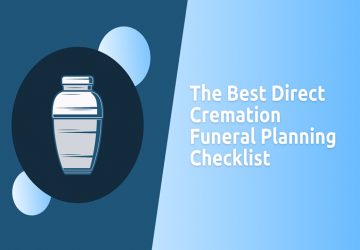- Published on
Discover the Simple Steps to Organize a Direct Cremation with Ease
Discover the Simple Steps to Organize a Direct Cremation with Ease
During periods of sorrow, the uncomplicated nature of a direct cremation may provide comfort to relatives seeking an uncomplicated and cost-effective way to farewell their deceased family member. Direct cremation is less cumbersome than traditional funerals as it requires making fewer choices when families are already overwhelmed. The purpose of this article is to clarify the direct cremation process, offering detailed, step-wise instructions on how to arrange one, with the aim of maintaining the respect and honor due to the departed.

Direct cremation is a stripped-down procedure that doesn’t involve embalming, public viewings, or services prior to the act of cremation itself; following the cremation, the family can take their time for reflection. The reasons for choosing direct cremation vary, including personal preferences, ecological concerns, or budget constraints, and the approach allows for a variety of options when it comes to paying tribute to the loved one at a later time. Selecting a trustworthy provider for direct cremation is a pivotal decision. Evaluating potential providers is critical, and they should have proper licensing, transparent cost structures, positive client feedback, and a compassionate team. This section suggests how to assess providers, using tools like checklists or important questions to ask, as well as highlighting warning signs to watch out for to prevent exploitation during this sensitive period. It's essential to understand the mandatory legal and documentation required in the process, which entails getting a death certificate, a permit for cremation, and any other necessary authorizations. This segment will clarify the cremation provider's role in facilitating these tasks and underline the importance of knowing these procedures. Although paperwork can be overwhelming amid the mourning process, it is typically handled efficiently with the help of professional services. Although there is no embalming or display of the body with direct cremation, there is still a need for dignified preparation of the deceased. This entails handling the body with care, dressing it if the family desires, and deciding whether any personal items should accompany them in cremation. Finally, the article addresses the advantages of direct cremation in giving relatives the opportunity to thoughtfully choose where to place their loved one's ashes or how to conduct a memorial event. It explores a range of possibilities for commemorating the deceased, including interment, scattering of ashes, placement of the urn, as well as unconventional methods such as incorporating ashes into jewelry or tattoos. The essence of arranging a direct cremation lies in its simplicity at a time of emotional complexity. By understanding the process, carefully selecting a cremation service, maneuvering through the obligatory documentation, and addressing the preparation and remembrance of the deceased respectfully, families can ensure that their attention stays where it should — on cherishing the deceased's memory. An uncomplicated and direct cremation process allows families the necessary time, financial ease, and mental space to bid farewell in a manner that truly resonates with both their preferences and those of the dearly departed.